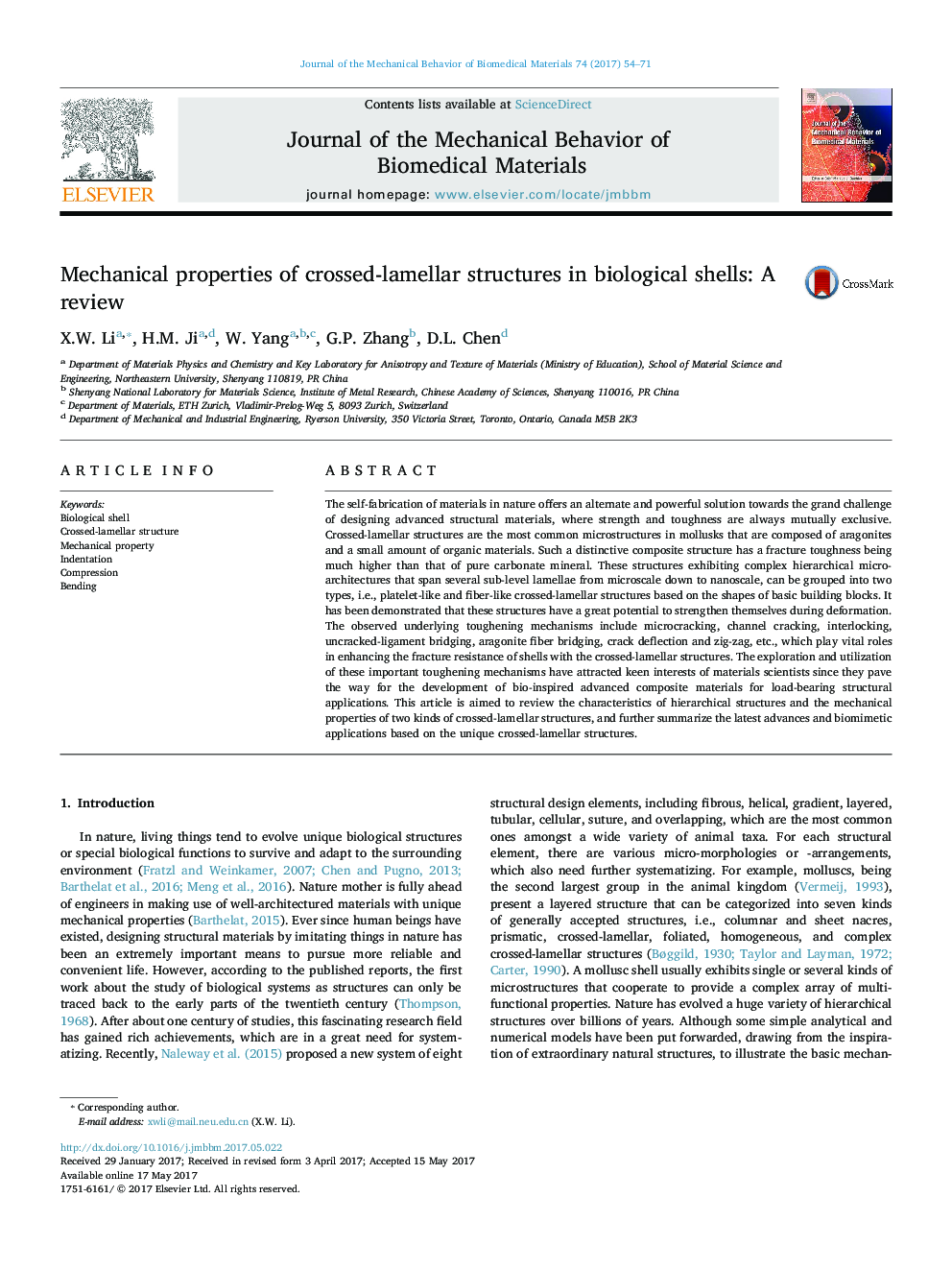| Article ID | Journal | Published Year | Pages | File Type |
|---|---|---|---|---|
| 5020396 | Journal of the Mechanical Behavior of Biomedical Materials | 2017 | 18 Pages |
Abstract
The self-fabrication of materials in nature offers an alternate and powerful solution towards the grand challenge of designing advanced structural materials, where strength and toughness are always mutually exclusive. Crossed-lamellar structures are the most common microstructures in mollusks that are composed of aragonites and a small amount of organic materials. Such a distinctive composite structure has a fracture toughness being much higher than that of pure carbonate mineral. These structures exhibiting complex hierarchical microarchitectures that span several sub-level lamellae from microscale down to nanoscale, can be grouped into two types, i.e., platelet-like and fiber-like crossed-lamellar structures based on the shapes of basic building blocks. It has been demonstrated that these structures have a great potential to strengthen themselves during deformation. The observed underlying toughening mechanisms include microcracking, channel cracking, interlocking, uncracked-ligament bridging, aragonite fiber bridging, crack deflection and zig-zag, etc., which play vital roles in enhancing the fracture resistance of shells with the crossed-lamellar structures. The exploration and utilization of these important toughening mechanisms have attracted keen interests of materials scientists since they pave the way for the development of bio-inspired advanced composite materials for load-bearing structural applications. This article is aimed to review the characteristics of hierarchical structures and the mechanical properties of two kinds of crossed-lamellar structures, and further summarize the latest advances and biomimetic applications based on the unique crossed-lamellar structures.
Related Topics
Physical Sciences and Engineering
Engineering
Biomedical Engineering
Authors
X.W. Li, H.M. Ji, W. Yang, G.P. Zhang, D.L. Chen,
